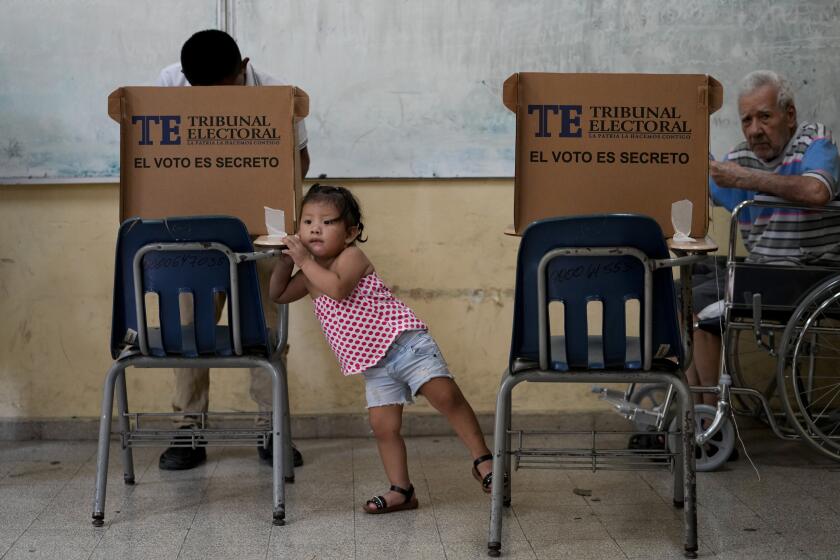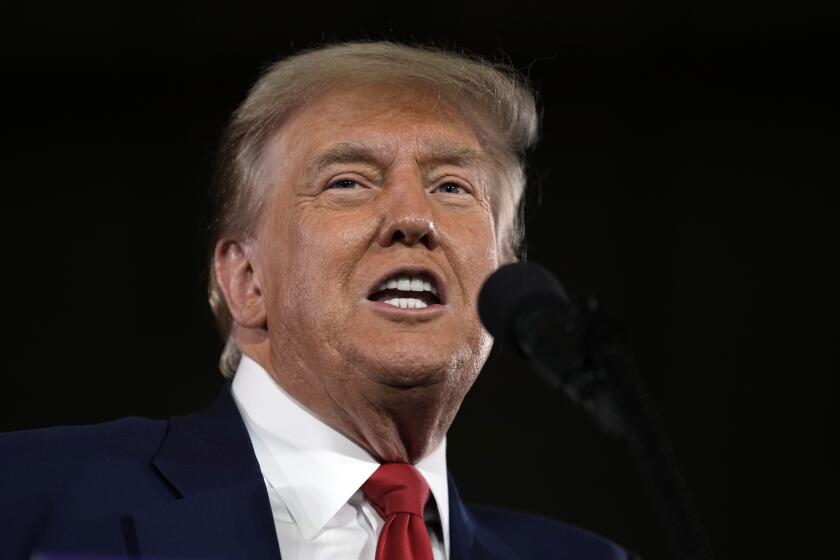Southland Balloonists Help Soviets Prepare for Lofty Goal
A hot-air balloon competition in Lithuania this summer was at once a flight into the past and a trip into the future for a visionary Rolling Hills balloonist who is intent on linking sport ballooning with scientific research.
The event, the Lituanica-Gordon Bennett Balloon Race, brought competitive international ballooning to the Soviet Union for the first time. And the trip, which included a stopover in Moscow for a visit to a scientific institute, also served to underscore ballooning’s applications in planetary research.
Although there have been isolated instances of hot-air and gas balloon flight in the Soviet Union, the grandness of this summer’s races in Lithuania was unprecedented, according to several people, including Rolling Hills City Councilman Tom Heinsheimer, who organized and directed the competition.
Fifteen teams from the United States, the Soviet Union, France, West Germany and Czechoslovakia descended on Vilnius and then Trakai, Lithuania, in late July. In wicker gondolas they bobbed over houses, farms and fields. They landed near placid lakes and in quiet meadows, and everywhere there were children stretching to give tiny wildflowers to the balloonists packed into the gondolas.
‘Picture Setting’
“The countryside is absolutely beautiful,” said Don Davis, a Long Beach pilot who flew two balloons competing in the events. “There were streams, chalets, country towns. It’s just like a picture setting.”
“It’s very undeveloped,” Heinsheimer’s wife, Julie, said. “You see a collective farm here and there, but the farmhouses are very primitive.”
From Lithuania, the balloonists went to Moscow, where they tethered a balloon first in front of the Space Research Institute of the Soviet Union (IKI) and then in Gorky Park. Throngs of wildly enthusiastic Muscovites were delighted with balloon rides.
“When you have people throwing children in the basket, what’s to say other than, ‘Please don’t throw the kids in the basket, ‘ “ Heinsheimer said.
The teardrop-shaped, colorful bags of hot air not only drew sport-ballooning enthusiasts but space scientists to Lithuania and Moscow. They were intent on learning as much as possible about manned balloon flight in preparation for a joint Soviet-French- U.S. venture to put exploratory balloons on Mars in 1994.
“You can’t fly on Mars if you can’t fly on Earth,” Heinsheimer said in discussing his month-long Lithuanian adventure. “We’re trying to show scientists and engineers how balloons work,” so they can fly the Mars balloons by computer from Earth.
A balloon hobbyist and vice president of space systems for Titan Systems in Gardena, Heinsheimer has taken a lifelong interest in the scientific applications of balloons.
Through the Pasadena-based Planetary Society, Heinsheimer has served as an adviser to both French and Soviet scientists working on the Mars balloon program. The Lithuanian balloon flights have served as a way of bridging the gap between Soviet space scientists skeptical about balloon flight on Mars and others, like Heinsheimer, who believe the effort is do-able but difficult.
Flying a balloon “is an excellent test bed,” he said, explaining that scientists know how balloons behave in Earth flight. “Then by comparative analysis, you can extrapolate what you learn on Earth to Mars. You just can’t get it all by computer.”
Heinsheimer played a key role in introducing Soviet scientists to manned ballooning about 18 months ago. In the spring, 1988, a Soviet scientific team visited Palm Springs for the Gordon Bennett Balloon Race--a competition that Heinsheimer was instrumental in renewing in 1979 after a 41-year interruption.
There the Soviets tried the sport and were given some hands-on instruction by a licensed instructor. Among the rookie balloonists in Palm Springs was Victor Kerzhanovitch, a leading IKI scientist.
In Pasadena recently for meetings on the Mars project and to observe Voyager’s rendezvous with Neptune, he said the Earth ballooning project had been beneficial for his understanding of what will happen on Mars. Particularly useful was the first series of balloon flights in Lithuania in July, 1988, also sponsored by the Planetary Society. He said the balloons were rigged so their flights would approximate ballooning in the Martian atmosphere.
Public Awareness Effort
Kerzhanovitch said that this summer’s international competition was most effective for heightening the Soviet public’s awareness of ballooning. “We need some public backing for it,” he said, since ballooning “is not done too much in the Soviet Union.”
Heinsheimer and Davis both expressed amazement at the latitude the balloonists were given in their flights over Soviet territory.
“There have been enormous changes in the Soviet Union regarding movement,” Heinsheimer said. “What was impossible before has become routine. We had a unique opportunity to do something spectacular.”
Davis said he was surprised at the openness, the friendliness extended to the Americans throughout their tour.
“There seemed to be no restrictions in Russia. We even flew over a military base and nobody said anything.”
Davis, an architect who has been ballooning since 1969, recalled a touching moment in a Vilnius stadium when, before a crowd of 20,000, the group of 40 Americans sang “God Bless America.”
“The whole place was quiet. You could have heard a pin drop. And after we were done, they stood up and screamed and yelled and hollered. They liked us. They really liked us.”
Heinsheimer hopes to return next summer to Lithuania as organizer of yet another competition, which will include gas balloons capable of flying for a thousand miles over the Soviet Union.
“One year and a half ago, I thought it was crazy,” Kerzhanovitch said. “But some crazy things happen sometimes. It was luck. Luck and change in political atmosphere. Friendly relations have made it possible.”
More to Read
Start your day right
Sign up for Essential California for news, features and recommendations from the L.A. Times and beyond in your inbox six days a week.
You may occasionally receive promotional content from the Los Angeles Times.






